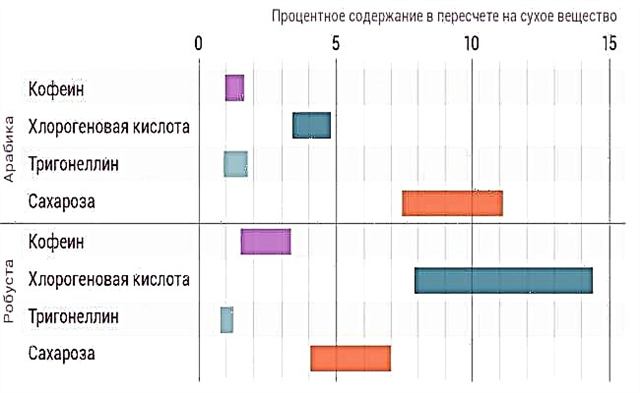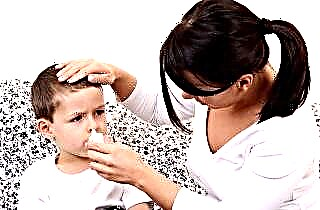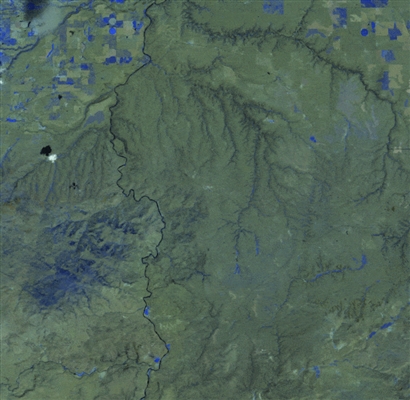The key task of postoperative therapy is to create optimal conditions for the fastest regeneration of the mucous epithelium at the site of the operated tissues. To speed up recovery after removal of adenoids in children, it is necessary to strictly follow all medical prescriptions of the postoperative period.
 Otherwise, the development of complications is not excluded, entailing a deterioration in the child's well-being. After adenotomy, the focus is on medication, hardening procedures, breathing exercises and nutrition. Already 2-3 hours after excision of the hypertrophied pharyngeal tonsil, the child is discharged home. But in order to prevent postoperative bleeding and septic inflammation of the nasopharynx, parents should monitor compliance with a sparing regimen for the next two to three weeks.
Otherwise, the development of complications is not excluded, entailing a deterioration in the child's well-being. After adenotomy, the focus is on medication, hardening procedures, breathing exercises and nutrition. Already 2-3 hours after excision of the hypertrophied pharyngeal tonsil, the child is discharged home. But in order to prevent postoperative bleeding and septic inflammation of the nasopharynx, parents should monitor compliance with a sparing regimen for the next two to three weeks.
The first hours after adenotomy
Adenotomy is a surgical procedure during which the ENT doctor removes hyperplastic lymphoid tissue in the fornix of the nasopharynx. Despite the fact that the operation takes little time, after excision of adenoid vegetations, the risk of septic inflammation of the mucous membranes and postoperative bleeding increases manifold. Immediately after adenotomy, patients are transferred to the general ward, where a specialist monitors their health for 2-3 hours.
To prevent blood aspiration, the following must be done after surgery:
- put the patient on the bed and turn him over on his side;
- put a towel under the head, in which the patient will cough up mucus with blood;
- apply gauze soaked in cold water to your face.
3 hours after the operation, the otolaryngologist should conduct a pharyngoscopic examination to assess the condition of the nasopharyngeal mucosa. In the absence of bleeding and severe tissue edema on the posterior wall of the laryngopharynx, the patient is discharged from the hospital.
Important! During the next 2 weeks, the operated child must be brought to the ENT doctor for examination.
Notes for parents
In the postoperative period, you need to carefully monitor the condition of the child and listen to his complaints about the state of health. Timely referral to a specialist prevents the development of serious postoperative complications. During the crescent, parents should monitor not only the patient's nutrition, but also the observance of a sparing regimen:
- exclude from the diet foods that irritate the mucous membranes of the ENT organs;
- limit physical activity, as this can lead to bleeding;
- strictly follow drug therapy and use vasoconstrictor drugs recommended by a specialist;
- stop using antipyretics that contain acetylsalicylic acid;
- ventilate the area regularly and use a humidifier.
Important! After the operation, you should not give the child "Aspirin" to lower the temperature, as it thinns the blood and can provoke bleeding.
During the day after adenotomy, an increase in temperature to subfebrile marks is possible. It is undesirable to use antipyretics to eliminate hyperthermia, since this is a completely normal reaction of the body to surgery. But if subfebrile fever persists for the next 3-4 days, seek medical attention. This may indicate the development of inflammation in the operated tissues.
Nutrition
A gentle diet is one of the key components of the postoperative rehabilitation period. Removal of the adenoids leads to tissue edema, which increases the risk of mucosal injury. To prevent damage to the ciliated epithelium in the laryngopharynx, you should stop eating spicy and solid foods for at least 2 weeks.
In the first days after adenotomy, the consumption of spicy and hot foods should be limited, as they can provoke irritation of the oropharyngeal mucosa.
The following foods should be included in the diet:
- fruit and vegetable purees;
- meat broths and herbal decoctions;
- oat and semolina porridge;
- steamed soups and cutlets.
After each meal, it is recommended to rinse the oropharynx with decoctions based on medicinal chamomile, oak or sage bark. They contain phytoncides that suppress the development of pathogenic bacteria, which prevents the development of septic inflammation in the operated tissues.
Prohibited foods
Poor nutrition can not only cause inflammation, but also provoke the development of an abscess in the paratonsillar and pharyngeal region. Even if the child demands a habitual diet, one should not indulge his whims, as this can lead to undesirable consequences. It is recommended to exclude hot spices, hot dishes, carbonated drinks and unnatural juices from the menu.
Food dyes cause allergic reactions in the operated tissues, which leads to a decrease in local immunity and swelling of the mucous membranes.
Within 10 days after adenotomy, it is undesirable to consume the following foods:
- canned and pickled vegetables;
- confectionery (sweets, pastries, cakes);
- canned fish and stew;
- sour fruits and vegetables.
The greatest danger to the health of the child is confectionery. They contain a large amount of sugars, which are a suitable substrate for the development of pyogenic bacteria.
Breathing exercises
Respiratory gymnastics is one of the most effective ways to restore normal nasal breathing after adenotomy. Classes should be done daily for 1-2 weeks after surgery. During gymnastics, you need to consider several important recommendations:
- at the time of increasing the load on the respiratory system (bends, squats), the child should take a deep breath;
- when relaxing the muscles and spreading the arms to the sides, you need to take a breath;
- exhalation and inhalation should not be abrupt.
Respiratory gymnastics begin to be done 5-6 days after adenotomy. Over time, the load is increased to accelerate the restoration of the functional activity of the nasopharynx. What exercises can be done during the period after removal of the adenoids?
- for abdominal breathing: stand up straight with your arms at your sides; exhale slowly so that the upper part of the abdominal wall is drawn into the abdomen;
- for chest breathing: take a deep breath through the nose so that the chest rises up and the stomach is pulled in; holding your breath for 2-3 seconds, exhale slowly through your nose;
- for a full breath: take a slow breath through your nose, pushing your belly forward; as you exhale, pull in your stomach, compressing your chest as much as possible.
It is impossible to carry out breathing exercises with the development of respiratory diseases, as this will only worsen the well-being of the child.
Each exercise must be performed at least 10-15 times in a row in three sets. If the child complains of dizziness, postpone classes for 2-3 days.
Possible consequences of adenotomy
Having decided on surgery, parents should be aware of the possible consequences of adenotomy. Failure to comply with the rules of rehabilitation therapy leads to the development of local complications. Common postoperative complications include:
- nosebleeds - refusal to use vasoconstrictor drugs leads to nosebleeds, which increases the risk of bleeding aspiration and pulmonary obstruction;
- inflammation of the laryngopharynx - irregular sanitation of the oropharynx with antiseptic solutions entails the development of purulent inflammation, the untimely relief of which leads to the development of a pharyngeal or paratonsillar abscess;

- allergic edema of soft tissues - drug abuse often entails allergic reactions and severe swelling of the mucous membranes of the upper respiratory tract, which makes nasal breathing difficult;
- paresis of the palate - surgery negatively affects the elasticity of epithelial tissues, which can cause the development of open rhinophonia.
During surgery, the surgeon is not always able to completely remove the hyperplastic adenoid tissue. For this reason, relapses of ENT diseases and repeated proliferation of the pharyngeal tonsil often occur. In this case, repeated surgical treatment is required.
General recommendations
Preventive measures provide for a complete rejection of physical activity within a month after the surgery. During the entire postoperative period, it is not recommended to bathe children in hot water, as this can lead to dilation of blood vessels and nosebleeds. In addition, the patient's exposure to the sun should be minimized.
To reduce the likelihood of developing respiratory diseases, it is recommended to limit the child's contact with others in the first 10 days after adenotomy.
It is possible to accelerate the healing process of wounds in the nasal cavity with the help of nasal drops, which have an antiphlogistic and regenerating effect. In the presence of allergic reactions to the components of medications, you should consult your doctor and replace the vasoconstrictor drops with more gentle, non-irritating nasopharyngeal mucosa.



